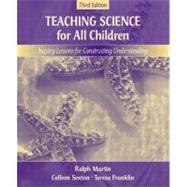
Note: Supplemental materials are not guaranteed with Rental or Used book purchases.
Purchase Benefits
What is included with this book?
| Preface | vii | ||||
|
|||||
|
1 | (12) | |||
|
1 | (1) | |||
|
2 | (1) | |||
|
2 | (1) | |||
|
3 | (1) | |||
|
3 | (4) | |||
|
7 | (1) | |||
|
8 | (5) | |||
|
|||||
|
13 | (12) | |||
|
13 | (3) | |||
|
16 | (1) | |||
|
17 | (1) | |||
|
18 | (2) | |||
|
20 | (3) | |||
|
23 | (2) | |||
|
25 | (220) | |||
|
26 | (71) | |||
|
27 | (3) | |||
|
30 | (2) | |||
|
32 | (3) | |||
|
35 | (4) | |||
|
39 | (3) | |||
|
42 | (3) | |||
|
45 | (3) | |||
|
48 | (3) | |||
|
51 | (3) | |||
|
54 | (4) | |||
|
58 | (3) | |||
|
61 | (2) | |||
|
63 | (3) | |||
|
66 | (5) | |||
|
71 | (3) | |||
|
74 | (3) | |||
|
77 | (3) | |||
|
80 | (3) | |||
|
83 | (3) | |||
|
86 | (3) | |||
|
89 | (4) | |||
|
93 | (4) | |||
|
97 | (73) | |||
|
98 | (2) | |||
|
100 | (3) | |||
|
103 | (2) | |||
|
105 | (4) | |||
|
109 | (3) | |||
|
112 | (3) | |||
|
115 | (4) | |||
|
119 | (4) | |||
|
123 | (4) | |||
|
127 | (2) | |||
|
129 | (4) | |||
|
133 | (5) | |||
|
138 | (2) | |||
|
140 | (4) | |||
|
144 | (2) | |||
|
146 | (2) | |||
|
148 | (3) | |||
|
151 | (3) | |||
|
154 | (3) | |||
|
157 | (2) | |||
|
159 | (4) | |||
|
163 | (2) | |||
|
165 | (5) | |||
|
170 | (75) | |||
|
171 | (3) | |||
|
174 | (4) | |||
|
178 | (2) | |||
|
180 | (3) | |||
|
183 | (4) | |||
|
187 | (4) | |||
|
191 | (3) | |||
|
194 | (4) | |||
|
198 | (4) | |||
|
202 | (2) | |||
|
204 | (5) | |||
|
209 | (3) | |||
|
212 | (3) | |||
|
215 | (2) | |||
|
217 | (2) | |||
|
219 | (4) | |||
|
223 | (4) | |||
|
227 | (4) | |||
|
231 | (3) | |||
|
234 | (3) | |||
|
237 | (8) | |||
| Appendix A: National Science Education Standards: Content Standards for K--4 and 5--8 | 245 | (6) | |||
| Appendix B: NSTA Position Statement: Guidelines for Responsible Use of Animals in the Classroom | 251 | (1) | |||
| Appendix C: NSTA Position Statement: Liability of Teachers for Laboratory Safety and Field Trips | 252 | (1) | |||
| Appendix D: NSTA Position Statement: Laboratory Science | 253 | (2) | |||
| References | 255 | (2) | |||
| Index | 257 |
The New copy of this book will include any supplemental materials advertised. Please check the title of the book to determine if it should include any access cards, study guides, lab manuals, CDs, etc.
The Used, Rental and eBook copies of this book are not guaranteed to include any supplemental materials. Typically, only the book itself is included. This is true even if the title states it includes any access cards, study guides, lab manuals, CDs, etc.